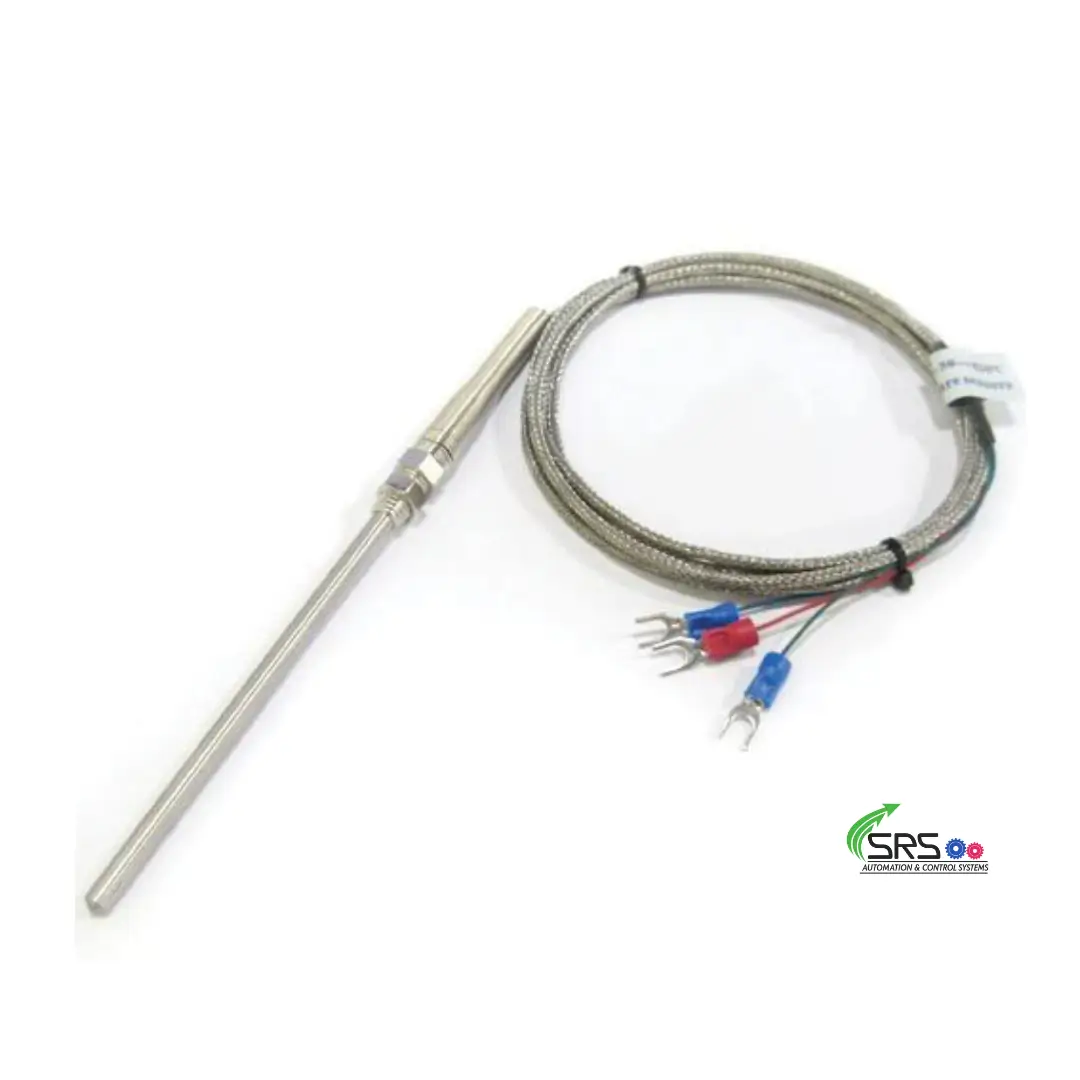
RTD PT100 Thermocouple Sensor, 3 Wire, -200 to 600°C
High-accuracy 3-wire RTD PT100 sensor with threaded connection and stainless steel probe. Suitable for a wide range of industrial applications up to 600°C.
Features
Product Description
The RTD PT100 Thermocouple Sensor from SRS Automation and Control Systems is a highly accurate and durable temperature sensor designed for industrial environments. With a Class B accuracy and wide temperature range from -200°C to 600°C, this sensor is ideal for autoclaves, HVAC systems, flameproof zones, pipelines, pharma, and more. It features a stainless steel probe with threaded connection (NPT/BPT), a 3-wire configuration for stable signal transmission, and a robust 3-meter cable. The termination type is jack-based for easy connectivity. Also available in customized sizes and configurations based on client requirements.
Specifications
Share this article